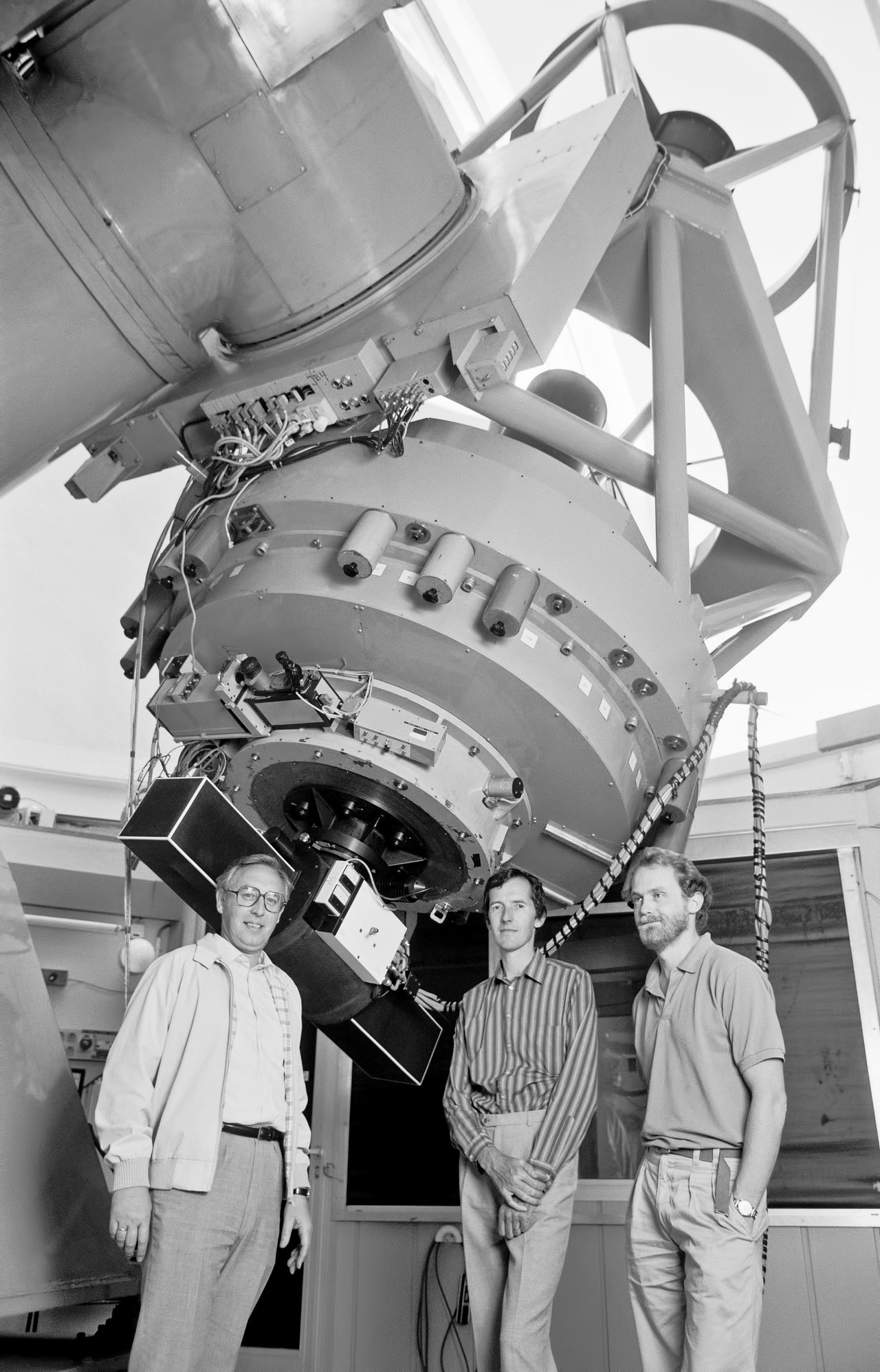CORAVEL
CORrelation-RAdial-VELocities
The CORrelation-RAdial-VELocities (CORAVEL) instrument was a Cassegrain spectrometer for determining stellar radial velocities with very high time resolution and high accuracy. The instrument was mounted on the Danish 1.54-metre telescope at La Silla Observatory in 1981 and was operated by the Geneva Observatory and then shared with Danish and ESO astronomers. CORAVEL was mounted on the Danish 1.54-metre telescope because it required a rather large telescope (1.5 metre diameter or larger), allowing fast automatic pointing and this telescope was the only one adapted to receive it.
The project for building CORAVEL started in 1971 from a collaboration between the Marseille Observatory and the Geneva Observatory and was financed by the Swiss National Foundation for Scientific Research and the French National Institute for Astrophysics and Geophysics. Two CORAVEL instruments were made, the first being mounted on the 1-metre Swiss telescope at the Haute-Provence Observatory in 1977. With the second CORAVEL mounted on the Danish 1.54-metre telescope a natural collaboration between ESO astronomers and astronomers from several institutes and observatories in Denmark, Switzerland and France was born.
As a radial velocity scanner, CORAVEL worked by comparing a stellar spectrum with a reference spectrum, providing for that period exceptional accuracy (250 m/s) and acquisition speed (measurements took less than 5 minutes). The reference was a template with about 3000 holes matching the absorption lines of Arcturus and that was located in the focal plane of the spectrograph. The stellar velocity was derived from the how well the stellar spectrum matched the template, with the zero point of the velocity determined by the spectrum of iron produced by a hollow-cathode lamp.
During their more than 20 years of operation the two CORAVEL spectrometers measured hundreds of thousands of radial velocities in thousands of stars, most of them part of surveys conducted in Chile and France. These surveys included for example: a systematic study of the multiplicity of solar-type stars, a comprehensive study of the chemical properties and movements of 14 000 F- and G-type stars, and studies of the motion of globular clusters and stars in open clusters.
CORAVEL in La Silla was decommissioned in January 1998 and eventually returned to Switzerland.
CORAVELThis table lists the global capabilities of the instrument.
|
